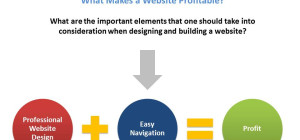Welcome to full-stack development, where frontend magic meets backend wizardry! In this blog, we set out on a thrilling quest to learn how to create a potent full-stack application with Next.js. Get ready to witness the fusion of seamless user experiences and robust server-side functionality as we dive deep into Next.js.
From setting up the environment to mastering the art of routing and data fetching, we’ll unravel the mysteries behind this cutting-edge JavaScript framework. So, whether you’re a seasoned developer seeking to level up your skills or an aspiring coder looking to make your mark, join us as we demystify the process of crafting extraordinary full-stack applications with Next.js. Get your coding cape ready; adventure awaits!
What is a Full-Stack Application?
A full-stack application is a software application developed to operate and manage a web application’s front-end (client-side) and back-end (server-side) components. It encompasses all the layers and technologies in building a complete web application, from the user interface and user experience (UI/UX) to the server logic, database management, and system infrastructure.
The parts of a full-stack program that the user can see and interact with directly are called the front-end, or client-side. It typically includes the user interface, which is responsible for presenting the application’s content and features in a visually appealing and user-friendly manner. Technologies such as HTML, CSS, and JavaScript are commonly used to develop the front end of a full-stack application.
On the other hand, a full-stack application’s backend, or server-side, involves the components that handle the behind-the-scenes operations and logic. It includes the server infrastructure, application logic, and database management. Processing user requests, communicating with databases, carrying out calculations, and producing suitable responses are all tasks that fall under the purview of the backend. Technologies used for the backend can vary and may include programming languages like Python, Java, or JavaScript, as well as frameworks and tools like Node.js, Django, Flask, Ruby on Rails, or ASP.NET.
By integrating both the front-end and back-end components, a full-stack application enables seamless communication and interaction between the user interface and the server. It allows a complete and cohesive web application to handle user input, process data, and deliver responses efficiently.
Custom web development company specializing in full-stack application development has knowledge and expertise in front-end and back-end technologies. They are capable of managing a variety of application development tasks, such as deployment, database management, client-side programming, and user interface design.
How to Develop a Full-Stack Application Using Next.js?
This in-depth manual will show you how to use Next. js, a potent framework built on top of React, to create a full-stack application. We can take advantage of server-side rendering with Next.js to build feature-rich applications that offer a smooth user experience. Whether you’re a startup, small business, or enterprise, this guide will equip you with the knowledge and tools needed to leverage Next.js for building cutting-edge full-stack applications.
Section 1: Understanding Next.js
Understanding Next.js’s foundations is crucial before starting the development process. With the help of the JavaScript framework Next.js, React can do server-side rendering (SSR) and static site generation (SSG). SSR enables the server to render React components, resulting in completely rendered pages being given to the client. This strategy enhances user experience, performance, and search engine optimization (SEO). In contrast, SSG creates static HTML files during the construction process, allowing for quicker page loads and lighter server workloads.
Section 2: Setting Up the Project
We need to set up our development environment to begin developing a full-stack application with Next.js. Make sure you have Node.js installed, and then create a new Next.js project using the Next.js CLI or by initializing a new Npm project. Next.js provides a simple folder structure that helps organize your code effectively. Additionally, it offers built-in tools such as Webpack and Babel for seamless bundling and transpiring.
Section 3: Designing the User Interface
The user interface (UI) is a crucial aspect of any application. Next.js, being built on React, allows us to leverage the power of reusable components and declarative UI development. Next.js can create interactive and visually appealing interfaces using popular libraries like Material-UI, Tailwind CSS, or Chakra UI. These libraries provide pre-built components and styling options, saving development time and effort.
Section 4: Implementing Server-Side Rendering
The ability to conduct server-side rendering (SSR), which enables quicker page rendering and better SEO, is one of Next.js’ main advantages. We can retrieve data from external APIs or databases and render it on the server before providing the whole displayed page to the client by utilising Next.js’s API routes. This strategy guarantees a seamless user experience because the first time a page loads, it has data.
Section 5: Building the Backend
Full-stack app development requires a robust backend to handle data storage, business logic, and API integrations. Next.js provides multiple options for building the backend, such as integrating with existing RESTful or GraphQL APIs or creating a custom backend using Node.js and Express. Utilizing Next.js’s API routes, we can easily define serverless functions to handle backend logic and interact with databases or other external services.
Section 6: Deployment and Scaling
After completing the development process, it’s time to deploy and scale your Next.js application. Next.js supports various deployment options, including popular platforms like Vercel, Netlify, and AWS Amplify. These platforms provide seamless integration with Next.js and offer scalable hosting solutions. You can ensure your application performs optimally under high traffic loads by leveraging features like automatic scaling and caching.
Benefits of Developing Full-Stack Application Using Next.js
Build a full-stack application using Next.js offers several benefits. Next.js is a popular React framework that provides a robust toolset for building server-rendered, static, or hybrid web applications. Here are some of the key benefits of using Next.js for full-stack development:
Server-side rendering (SSR):
With the help of Next.js, you may render web pages on the server before transmitting them to the client. SSR boosts performance by strengthening search engine optimization (SEO), decreasing the time it takes for a page to load initially, and improving user experience. It also makes it possible to update dynamic material without affecting SEO.
Built-in routing:
Next.js has a powerful routing system that simplifies defining and managing routes in your application. It supports client-side and server-side routing out of the box, making it easy to create complex navigation structures.
Automatic code splitting:
By automatically performing code splitting, Next.js only transmits to the client the JavaScript code required for a specific page. By decreasing the initial payload size, this function enhances performance by enabling quicker page loads, especially on slower network connections.
API routes:
Along with your usual page routes, Next.js offers a practical method for creating API routes. You can create sophisticated API endpoints without the requirement for a separate backend server by defining serverless functions within your application to handle incoming requests. This functionality lessens the overall complexity of your application and makes Next.js web development simpler.
Static site generation (SSG):
Next.js supports static site generation, allowing you to pre-render your entire application as static HTML files. This approach is ideal for content-driven websites, blogs, or landing pages where the content doesn’t change frequently. Static site generation provides excellent performance, as the generated HTML files can be cached and served directly from a CDN (Content Delivery Network).
Takeaway!
In conclusion, developing a full-stack application using Next.js offers benefits such as server-side rendering, automatic code splitting, API routes, static site generation, TypeScript support, and a vibrant ecosystem. With Next.js, you can build performant, scalable, and SEO-friendly applications with reduced complexity and development time.








